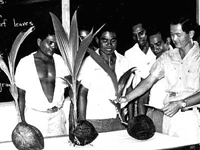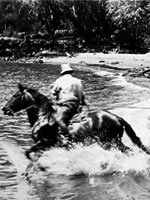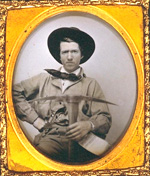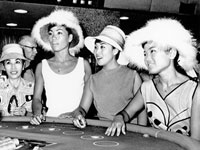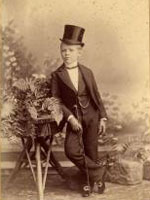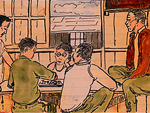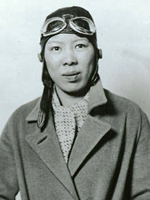Coca-Cola ads used to say “Can’t beat the real thing.” At the Jewish Historical Society of Greater Washington, the real thing is our historic synagogue, and indeed, nothing can beat it for educating students about immigrant and neighborhood history in the nation’s capital city.
Originally built by Adas Israel Congregation in 1876, the 25-foot by 60-foot synagogue was a simple house of worship that served German and Eastern European Jewish immigrants in downtown Washington. President Ulysses S. Grant attended its dedication. Because of the building’s significance, the Society moved it three blocks in 1969 to save it from the wrecker’s ball. Today we run the Lillian & Albert Small Museum there.
Among our primary visitors are school groups, mainly from Jewish congregational schools and day schools, but private and public schools visit as well. The building is the focal point of all youth programs.
. . . 3rd7th graders look for clues about the building's function in its architecture.
In Synagogue Story, K2nd graders compare the restored 19th-century sanctuary with the 21st-century sanctuaries (or even theaters!) they know—and then make a model of the building to take home with them. In Building Detective, 3rd7th graders look for clues about the building's function in its architecture. A separate balcony for women teaches them about gender roles in 19th-century American Judaism. A cobalt blue window and a photo of a crucifix in the sanctuary offer a glimpse into the synagogue's later life as a Greek Orthodox Church. Walking by the front façade, then seeing a photo of it with a pork barbecue sign, conveys the story of a continually changing urban neighborhood.
While we could just lecture about late 19th- and early 20th-century Jewish life in Washington, having students physically present in the space, sitting on wooden pews similar to those used over a century ago, seeing photos of how the same space once looked, walking on the old, creaking floors, and studying artifacts used in the space—nothing can top that experience, those sensations, that visceral connection to the past, and the power of the authentic. One teacher said her students will "remember the pews and the bench for President Grant and that he stayed for the entire three-hour service and wore a hat the entire time."
Using material culture—whether a building, a historic artifact, or even a photograph—engages the senses and thus enhances learning.
On walking tours, middle and high school students travel the same streets where Jewish, Italian, German, and Chinese immigrants lived, worked, and worshiped. They traverse blocks of modern office buildings and courthouses, then react with surprise to photos of brick row houses, the four surviving former synagogues, and other physical remnants of the past. Out-of-town students connect with Washington as a city, beyond the monuments and museums on the National Mall.
This is the educational theory of constructivism at work. Using material culture—whether a building, a historic artifact, or even a photograph—engages the senses and thus enhances learning. As we've seen by watching students beholding the synagogue's original ark and simple woodwork, they gain an emotional connection to the history. Another teacher told us that his students, spurred by the experience, asked "great follow-up questions" on the ride home.
So for teachers, we strongly recommend bringing students to historic sites—particularly those off the beaten path—and taking them on walking tours. We know that's not always possible, with school budgets being what they are. Alternatively, many teachers make effective use of "treasure boxes" sent out by museums. These include replica artifacts and photos, which still accomplish the most important goal: helping students connect to the past in a tangible way.
